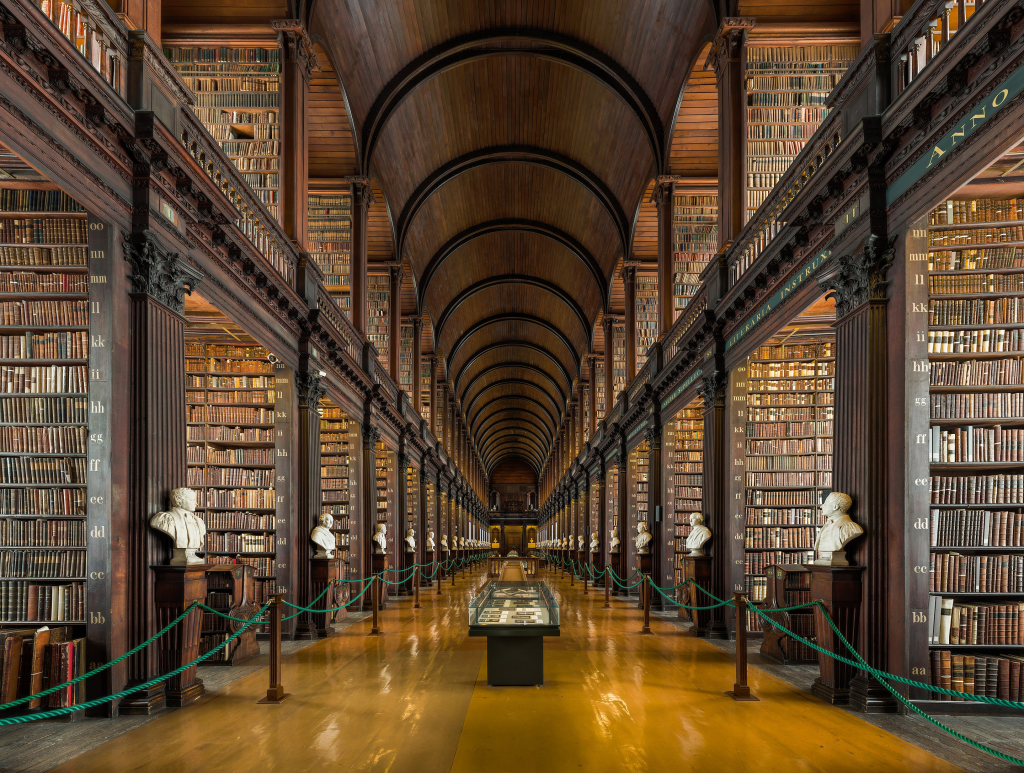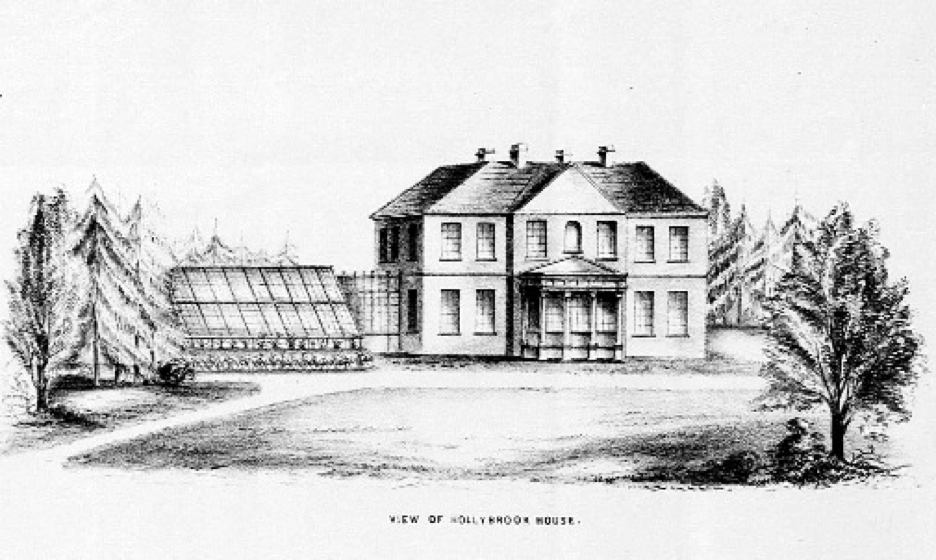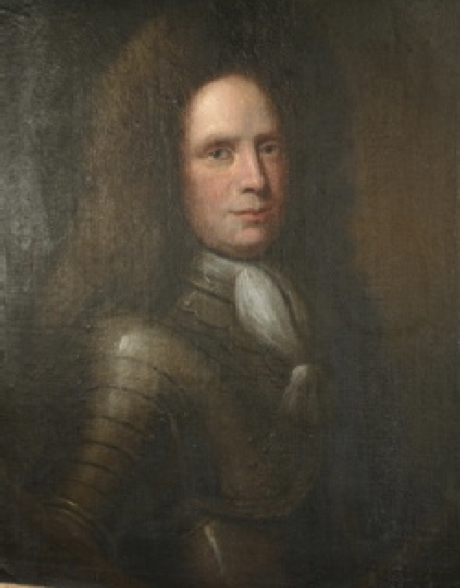Edith Alice’s father Henry William Brougham (1827-1913), and her uncle, Henry’s brother John Richard Brougham (1829-1913) followed in their father’s footsteps, and entered the clergy.
Henry was apparently a bright boy, and as it turned out he benefitted from his cousin Henry the 1st Lord Brougham’s influence. The boy’s mother Catherine Macartney had ambitions for him and Catherine knew how to push Lord Brougham’s buttons. She described an intelligent lad with an interest in both science and the classics, held back by inadequate educational opportunities.
Henry William, baptized 27 February 1827, was clearly destined for the higher reaches of the Church. On 2 January 1841 Catherine Brougham wrote to Lord Brougham (this is William, Lord High Chancellor) of her need to remove to Cork (town) to secure the continued education of her sons.
‘Creagh Glebe has, for nearly ten years afforded every advantage to their childhoods, but Henry, being now almost fourteen requires more systematic instruction than can be obtained in this remote part of the country. He has been for a short time at Bendon School, the master of which says he is likely to become a distinguished scholar both in sciences and classics they are both intelligent boys, and Henry possesses powers not unworthy of the name he bears’.
Peter Brougham Wylie. A Gatherings of Broughams But Not a Clean Sweep. 1998. p. 74.
Education, science and the classics were among Lord Brougham’s boyhood enthusiasms. Catherine Macartney knew the right approach with this eminent politician likely because she herself came from a political family. In fact she came from a pretty extraordinary family.
The Macartney and and Hussey Families
Rev. Henry Brougham’s mother, Catherine Ann Mona Macartney (1804-1892) was the daughter of Sir John Macartney (1747-1812) and his second wife Catharine Hussey (1771-1840).
Sir John Macartney sat in the Irish House of Commons for Fore from 1793 to 1800. He also served as Deputy Chief Remembrancer of the Exchequer of Ireland. On 29 April 1796, at the opening of the Grand Canal Docks, he was knighted “in consequence of his energetic exertions in the promotion of the inland navigation of Ireland”, and on 4 January 1799 he was created a baronet, of Lish, County Armagh.

Sir John’s wife Catherine Hussey was the daughter of Walter Hussey Burgh (1742-1783) and his wife Ann Burgh (1745-1782). Walter Hussey Burgh was an Irish statesman, barrister and judge who sat in the Irish House of Commons, served as Prime Serjeant (1777–79, 1782) and Chief Baron of the Irish Exchequer (1782–83) and was considered to be one of the outstanding orators of his time. His speech and dramatic resignation in 1779 calling for free trade helped remove commercial burdens imposed by England.
‘Talk not to me,’ he said, ‘of peace. Ireland is not at peace. It is smothered war. England has sown her laws as dragon’s teeth, and they have sprung up as armed men.’ The tumultuous applause provoked by this imagery was taken up by the gallery, from which it was thundered to the crowd at the door, and as the import of the words passed from mouth to mouth, they caused a thrill of excitement through the whole city. After concluding his speech, he again rose and resigned the office he held under the crown.
Dictionary of National Biography, 1885-1900, Volume 07 Burgh, Walter Hussey by Thomas Finlayson Henderson

Edith Alice’s father Rev. Henry Brougham inherited a calling from his father’s family and important political connections on both his father’s and mother’s sides. Catherine Hussey came from a political family and knew how to write to Lord Brougham to promote her son.
In any event Henry did indeed bear out the forecast she made of his future.
He was admitted Trinity College Dublin, on 3 July 1843, where he was Classical Moderator and Gold Medallist in 1847 and Divinity Testamonium 1849.

I imagine young Henry wandering through this room would have known that his great great grandfather Thomas Burgh, on his mother’s side, designed the place.
The Old Library was the work of Thomas Burgh (1670-1730), an Irish military engineer, architect, and Member of the Parliament of Ireland who served as Surveyor General of Ireland (1700–1730) and designed a number of the large public buildings of Dublin including the old Custom House (1704–6), Trinity College Library (1712–33), Dr Steevens’ Hospital (1719), the Linen Hall (1722), and the Royal Barracks (1701 onwards).

This is a hand colored ca. 1782 engraving of the Linen Hall market building designed by Thomas Burgh. It was later used as the English Army barracks and was destroyed during the Easter Rising in 1913.
Thomas Burgh is my 6th great grandfather. Nice to finally see an architect and engineer in the family after all those politicians.
But seriously, like Oh my God! Grandpa Tom designed these important buildings and others. This guy. Moment of Irish family pride right here.

So, young Henry Brougham’s mother’s family also included some illustrious ancestors, his mother pulled some strings and Henry lived up to great expectations, in his education and career and his marriage too.
On 5 April 1851 Henry married Lucy Alleyn Becher, daughter of Harry Becher of Aughadown, Co. Cork.
What sort of people were Edith Alice’s mother’s family?
The Beecher and Jermyn families
Edith Alice’s mother Lucy Alleyne Beecher (1830-1910) was the daughter of Henry Owen Becher (1775-1841) and Catherine Jermyn (b.1783). They appear in Burkes Landed Gentry starting with Richard Hedges Beecher (1747-1825), Edith’s great grandfather.
RICHARD – HEDGES BECHER, Esq. of Hollybrook, m. 1st, in 1772, Letitia, dau. of Richard Hungerford, Esq. of the Island, and had, by her, two sons and a dau.—-viz., JOHN, his heir; Henry, who m. Catherine Jermyn, of Aughadown; and Frances-Eyre, m. to Richard Hungerford, Esq. of the Island. Mr. Becher m. 2ndly, Mary Alleyn, of the City of Cork, and had, by her, several children.
Burkes Landed Gentry 1847-49 vol 1. p.77
Henry Owen Becher and Catherine Jermyn of Aughadown, Edith’s grandparents, are listed in this 1847-49 edition but not their children presumably because our ancestor was not first in line to inherit. Younger son thing again.
As it turns out the older son died and Henry Owen Becher, Edith Alice’s grandfather inherited Aughadown House. Here is another long lost family seat!
Aughadown House was a mid 18th century property near Skibbereeen off west down the coast in Cork, that Henry inherited from his father Richard Hedges Becher.
Richard Hedges Becher (c.1747-1825) split the two properties, leaving Hollybrook to his grandson, Richard Henry Hedges Becher (c.1799-1882) and Aughadown to his second son, Henry Owen Becher (c.1774-1841). Aughadown seems to have been abandoned after Henry’s death, if not before. Unfortunately, Richard Hedges Becher had a reputation for profligacy and left the estate severely incumbered with debt. His grandson seems to have lived a rather hand-to-mouth existence but kept his head above water until the 1840s, when the collapse of rental income at the time of the Famine pushed him into insolvency. The 17,000 acre estate was sold through the Incumbered Estates Court in 1851, but Hollybrook and its demesne were acquired then by R.H.H. Becher’s cousin, John Richard Hedges Becher (1825-1901), the son of Henry Owen Becher. He too found it impossible to afford the upkeep of the estate and in 1858 it was again sold through the Incumbered Estates Court.
https://landedfamilies.blogspot.com/2022/07/520-becher-of-aughadown-house-and.html

In other words, Edith Alice’s maternal grandfather and his brother Richard inherited estates encumbered by their father’s debit, a burden neither of them could bear. Henry Owen Becher abandoned the 17th century Aughadown House which was falling to ruin. All that survives today apparently, is the west gable end and the two flanking walls, heavily mantled in ivy.

Another interesting factoid about Edith Alice’s maternal grandfather’s family: the Burke’s lineage claims the Becher family first settled in Ireland during the reign of Queen Elizabeth 1st. Also that one grandfather, Col. Thomas Becher (abt. 1640-1708) served as aide-de-camp to William III of Orange at the Battle of the Boyne.

If this is right, then my 7th great grandfather supported King William III, the William of William and Mary, the Dutch guy who invaded England, the Protestant who deposed Catholic King James II of England and Ireland. Wrong side IMO.

To summarize, Edith Alice’s mother’s family also came with a political connections, a pedigree, a ruined old house and an even longer residence in Ireland than the Brougham family.
Career in the Church and Village
Edith Alice’s father like her grandfather and great grandfather had a career in the church.
Henry Brougham was successively rector of Moynalty, Diocese of Meath; rector of Eirke, Ossory; and rector of Lismore. He was sometime Rural Dean in Meath and Ossory, Prebendary of Tascoffin; Sub-Dean and Precentor of Lismore Cathedral; examining chaplain to Primate Gregg; Diocesan Numerator and Dean of Lismore 1884-1813.
Peter Brougham Wylie. A Gathering of Broughams But Not a Clean Sweep. p. 74

The Church of Ireland was a body that commanded the adherence of a small minority of the population of Ireland and by the time this Rev. Brougham landed his job as Dean of Lismore (1884), it was no longer entitled to its traditional sources revenue.
The Irish Church Act of 1869 disestablished the Church of Ireland. Existing clergy of the church received a life annuity in lieu of the revenues to which they were no longer entitled. This was a blow to the Protestant ascendancy in Ireland. None of the Rev. Brougham’s four sons pursued a career in the church.

Despite a diminished benefice, Rev. Brougham kept up his end of the bargain. As Dean Brougham was the chief resident cleric of Lismore Cathedral and head of a group of surrounding parishes. He also kept an active civic life in the village. His death,
…was received with feelings of the deepest regret by people of Lismore and the South of Ireland. The deceased, who had reached an advantage, was beloved by all classes and creeds. He was Chairman of the Lismore Libraries Committee, and possessing splendid literary attainments, always took a deep interest in the working of the Free Libraries and schools in the district. As Chairman of the Lismore School Attendance Committee, deceased attended the meetings regularly, and did not spare himself in any when the interests of the town were concerned. For years he had acted as Chaplain at Lismore Workhouse, and was most assiduous in his visits to the patients, and his generous and noble heart was not mindful of their wants. The poor of the district will in an especial miss him, as his purse was at their disposal in times of distress.
From a transcription of a 1913 newspaper obituary, unknown title

Edith Alice’s parents are buried here in the Lismore Cathedral graveyard. Inscription excerpt:
Henry William Brougham D.D. Dean of Lismore who died April 11th 1913 aged 86 years and his wife Lucy Alleyne Brougham who died May 20th 1910 aged 80 years
Rev. Brougham’s mother Catherine Anna Mona Brougham and his brother, John Brougham cannon of Cloyne are also buried here.
I don’t pretend to know Rev. Brougham but if we believe his obituary he had a kind and noble heart and ministered to all classes and creeds and had a special interest in schools and libraries, caring in other words, not the sort of man to disown a daughter.
I can imagine Edith Alice leaving in spite of having good and loving relationship with her father, which puts a different spin on her tombstone inscription, leaning more toward fond remembrance of the man himself.
On the other hand who knows.
Dean Brougham lived to be 86 years old and Edith Alice survived him by only three years, but that’s jumping ahead in the story.